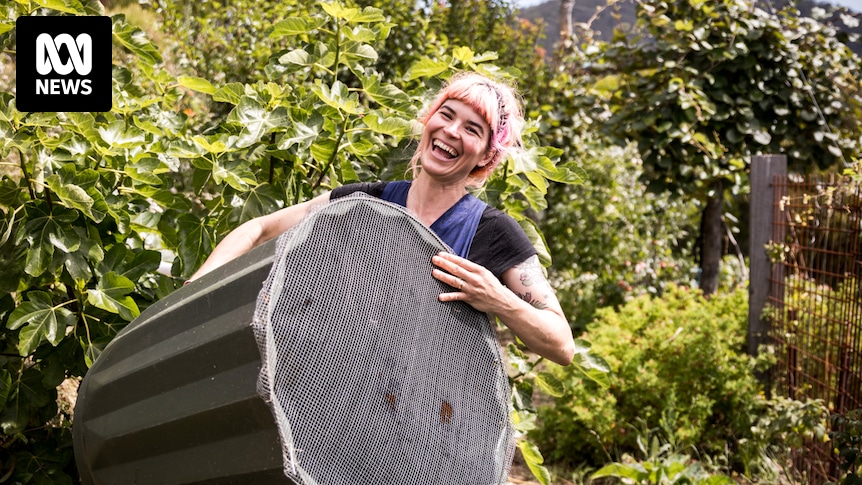Whether you’re new to composting or already an expert — you may be surprised by some of the household items you can throw into the mix.
Gardening Australia’s Hannah Moloney, who is also the director of Good Life Permaculture, says there’s a type of composting for everyone.
Knowing what to include can make the process seem less daunting for newbies, she says, and once you’ve mastered food scraps, it’s time to up your game.
Why composting is worthwhile
Compost is a nutrient-rich, organic material that is produced through the decomposition of organic matter such as kitchen scraps, yard waste, and other biodegradable materials.
Australian households waste 3.1 million tonnes of food each year (more than 5 kilograms each household per week).
Ms Moloney, based in Nipaluna/Hobart, says if we have the space, composting is an easy thing we can do to divert food waste from ending up in landfill, “where it becomes an environmental issue contributing to climate change”.
It’s good for the planet, but it can also help your own garden thrive.
You can use it as mulch, potting mix, and to top-dress your lawn.
Surprising items you can compost
Items suitable for composting you may already be across include fruit and veggie food scraps, cooked meal leftovers — even bits of meat and small bones in moderation, Ms Moloney says.
You can also compost pasta and porridge, and old cooking oil, for example.
“People say not to add onion skins, but you can put everything in. The main thing is you chop it up small and mix it up so it’s diverse — that’s key,” Ms Moloney says.
Some more surprising items that are compostable include tissues, egg cartons, chopsticks, and old cotton clothing such as undies, shirts, and linen pillowcases.
“They are a good blanket for your worm farm,” Ms Moloney says.
She says during a warm season, a cotton T-shirt can take just three to four weeks to break down in a worm farm.
“There will be some significant variables there depending on the shirt thickness — but biology is our friend and wants to eat stuff.”
Tea bags, nail clippings, hair, and toothpicks can also go into your compost.
Items that need their own space (and what to avoid)
Ms Moloney says even domestic pet poo is compostable, but warns “you do need an isolated composting system just for that — you don’t want to mix with household waste”.
That’s because pet waste can carry parasites that harbour disease.
“You don’t want that to end up in soil or foods that you are eating,” Ms Moloney says, adding while not suitable for your veggie patch, it would be perfect for natives, for example.
She also recommends burying it 15 centimetres below the soil so local wildlife can’t eat it and become sick or die.
“You do have to be careful with things like nappies for babies,” warns Ms Moloney. “They might say compostable, but if you put them into standard small backyard system, it won’t do much.
“Even the takeaway coffee cups that look papery but have a plastic lining, you can’t compost those.”
Getting started with composting
For those new to composting, Ms Moloney says you don’t have to build anything complicated if you don’t want to.
“At the very least you can get a compost bin, or a worm farm, and a few things to help get you started like some mulch — which you can even harvest for free from your garden.”
Rodent management, and getting the overall balance of your compost right, are some things to stay on top of.
“Don’t overfeed your compost; don’t put too much food waste in there, and the other thing is making sure it doesn’t smell.
“A good compost system doesn’t smell bad, it smells delightfully earthy.”
She says you need the right ratios between nitrogen (such as fresh green material and good scraps) and carbon (brown stuff like straw, old leaves or shredded office paper).
“You want 50/50 carbon to nitrogen ratio.
“Every time you add one bucket of food scraps, you add two buckets of carbon.”
When your compost is ready to use, Ms Moloney says it will look like a “beautiful dark brown soil”.
“It will smell sweet and earthy, and you won’t see big chunks of food matter.”
ABC Everyday in your inbox
Get our newsletter for the best of ABC Everyday each week
Posted , updated
